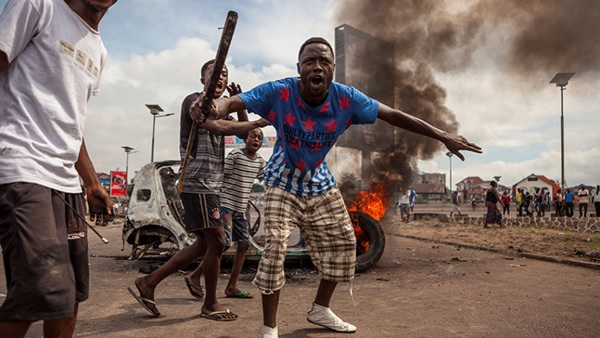
Kinshasa, DR Congo | AFP |
The Democratic Republic of Congo’s government, under pressure to act after months of violence in the south, on Sunday vowed to move away from a solely military solution.
Interior Minister Emmanuel Ramazani Shadari told reporters: “The state is envisaging political, traditional and humanitarian solutions on the ground.”
But he added Kinshasa’s response could be “military if arms are not laid down in a peaceful fashion to enable a lasting peace” in restless areas.
Shadari did not give further details as he sought to tackle a crisis stemming from last year’s killing of a tribal chief in the southern Kasai-Central region.
Tension was fanned by Saturday’s emergence of a seven-minute video purporting to show soldiers shooting unarmed civilians to death.
The apparent massacre in the village of Mwanza Lomba brought a confused government response to the clashes between troops and supporters of Kamwina Nsapu, killed by government forces in mid-August.
Although government spokesman Lambert Mende condemned the video as a “ridiculous fake… worthy of scenes from a Rambo movie,” a later statement noted possible “excesses and abuse” by soldiers, two of whom Kinshasa said were already on trial for unspecified charges.
The region where the clashes occurred has been beset by violence since Nsapu’s death.
Even before outrage over the video politicians were urging the government to calm the situation.
“It is up to the authorities at all levels, provincial and national, to find a solution,” Ibrahim Ikulu, a lawmaker from the ruling majority bloc, told AFP as politicians decried the upsurge in unrest.
“The solution to this problem is political, not military,” said opposition lawmaker Corneille Masuasua, who criticised how the military appeared to have taken matters into its own hands.
“It’s very dangerous to depend on the military,” Masuasua added.
Opposition lawmaker Claudel Lubaya insisted Sunday that “the government is responsible for this mindless violence.”
Lubaya said Kinshasa had made “an error of judgement in killing Kamwina Nsapu, causing the region to boil over.”
Alluding to the video, Lubaya said he held the government “fully responsible for these acts of barbarism” against people “whose only crime was to reject the ruling regime.”
Nsapu had personified widespread popular resentment in the troubled region against central government and provincial authorities, whom they blamed for appointing pro-regime officials to powerful local posts in place of traditional figureheads.
A further source of resentment was the summary burial of Nsapu without respecting customs in a region where locals regard him as still living.
 The Independent Uganda: You get the Truth we Pay the Price
The Independent Uganda: You get the Truth we Pay the Price



